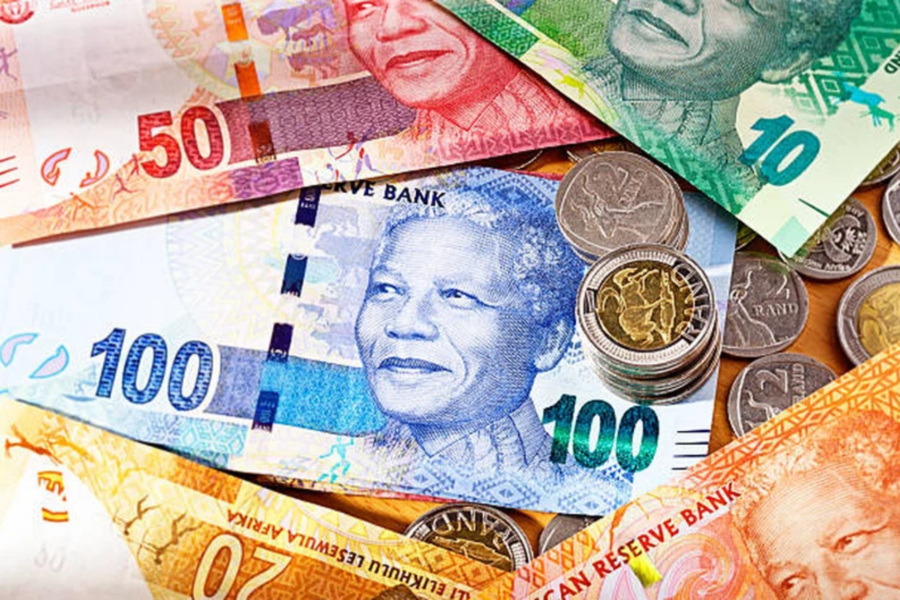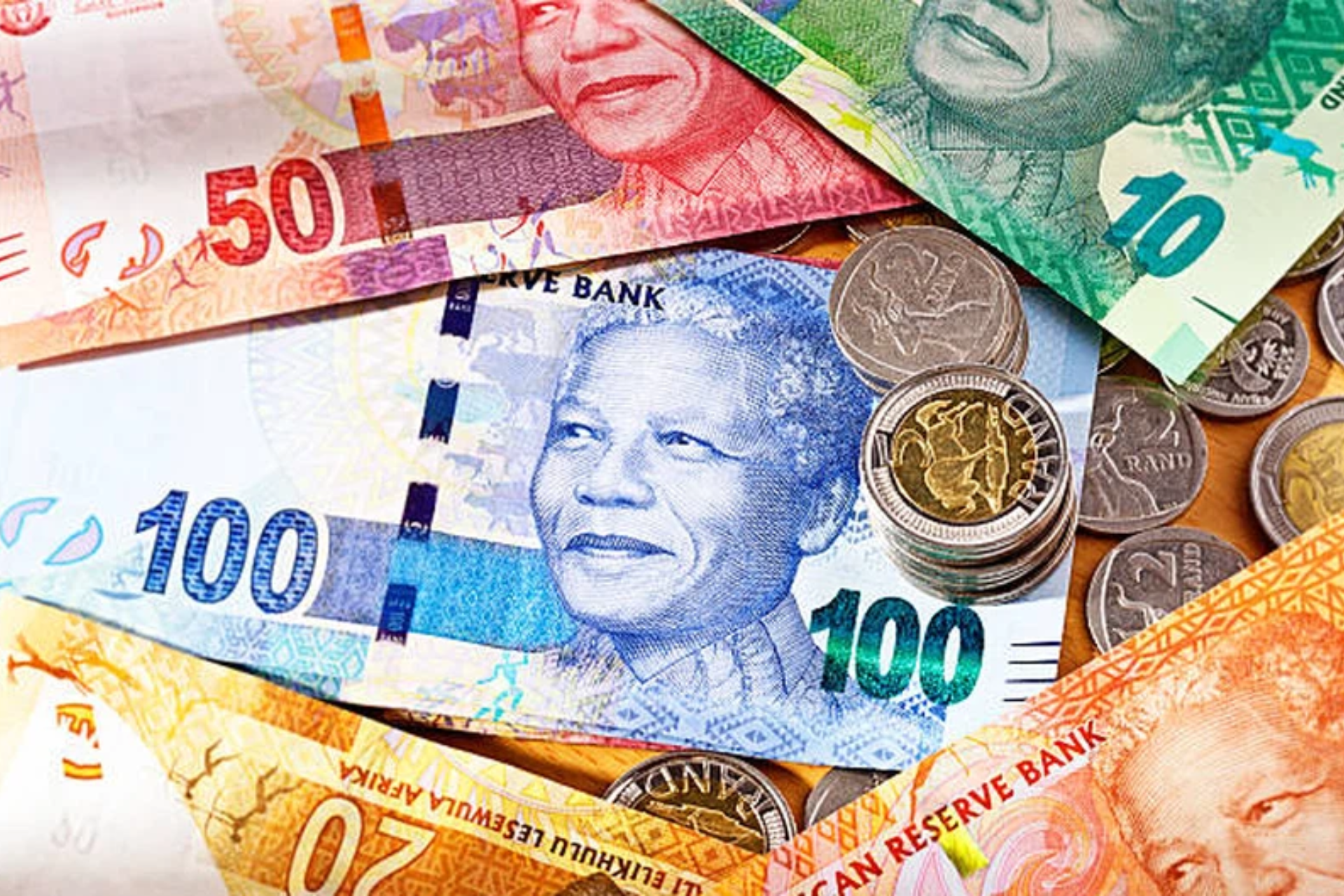
South African Rand weakened after a week of gains: Shares edge higher
The South African rand weakened on Monday, giving back some of the gains the currency made last week on hopes for the end of the U.S. Fed’s tightening cycle.

Reuters: The South African rand weakened on Monday, giving back some of the gains the currency made last week on hopes for the end of the U.S. Fed’s tightening cycle.
SOUTH AFRICAN RAND WEAKENED
At 1654 GMT, the South African rand traded at 18.3025 against the dollar, 0.25% weaker than its previous close. The rand has jumped around 2% against the greenback since the start of November. South Africa’s foreign minister said on Monday the country was recalling diplomats from Israel for consultations amid a rise in civilian casualties from its war with the Palestinian militant group Hamas.
ALSO READ: South Africa to brace for FIVE more years of load shedding
This week, investors will be closely watching South Africa’s September mining production and manufacturing figures for clues on the health of the local economy. Shares on the Johannesburg Stock Exchange rose, with the blue-chip Top-40 index closing about 0.7% higher. South Africa’s benchmark 2030 government bond was slightly weaker with the yield up 1 basis point at 10.395%.
ALSO READ: Who is the richest person in the world today? Top 10 list – 7 November 2023
U.S. DOLLAR
Reuters: The dollar was steady on Tuesday as traders took a breather from a risk rally, while the Aussie slid after the Reserve Bank of Australia raised rates, but left the door open on whether further hikes would be needed. The RBA raised interest rates by 25 basis points on Tuesday, ending four months of steady policy, but a tweak in language regarding the outlook stoked expectations that the central bank was done with its rate hikes. The Australian dollar fell 0.52% to $0.6474 after the decision and was last at $0.6460, but the currency remained close to the three-month peak of $0.6523 touched on Monday.
Commonwealth Bank of Australia’s currency strategist Carol Kong said the forward guidance was slightly watered down, which was perceived as dovish, resulting in the Aussie quickly giving back its gains after an initial knee-jerk rally. The Aussie and the New Zealand dollar have rallied over the past few days after a benign U.S. jobs report led markets to price in rate cuts by the middle of next year, lifting risk appetite. The kiwi was off 0.15% at $0.59545. “With the RBA out of the way, the major determinants of AUD/USD will shift back to global. Expect focus to move back to Fed rhetoric and the resultant impacts on US Treasuries,” Kong said.
The rally in bonds and equities last week looks to be fading, with yields higher at the start of the week and the market focus switching to a flurry of U.S. Fed officials due to speak this week. Federal Reserve Bank of Minneapolis President Neel Kashkari said on Monday the U.S. central bank likely has more work ahead of it to control inflation. Fed Chairman Jerome Powell is due to speak on Wednesday and Thursday, where the focal point will be on whether he maintains the more dovish tone struck after the Fed’s policy meeting last week.
ALSO READ: Themba Mkhangeli: The artist behind SA’s new R2 coin design
“If Powell sounds a bit more hawkish to push back against the easing of financial conditions later this week. I think the dollar can rebound,” said CBA’s Kong. “But I think it’s still too early to say the latest easing in the dollar will be sustained. Just given that the FOMC is still unclear whether or not they wanted to hike rates further.” Against a basket of currencies, the dollar index rose 0.085% to 105.36, having climbed 0.2% on Monday, but remained not far off a nearly two-month low of 104.84 touched on Monday.
The euro was down 0.07% to $1.0707, easing away from the eight-week peak of $1.0756 hit on Monday. Sterling was last at $1.2335, down 0.05% on the day, just shy of the seven-week high of $1.2428 it hit on Monday. The Japanese yen was at 150.23 per dollar back above the 150-level that has kept traders on edge in recent weeks as they look for signs of intervention from Tokyo. The yen hit 151.74 per dollar last week, edging closer to October 2022 lows that spurred several rounds of dollar-selling intervention. Bank of Japan Governor Kazuo Ueda said on Monday the country was making progress towards achieving the bank’s 2% target but not enough to end ultra-loose policy, warning of uncertainty over whether companies will keep rising wages next year.
BRITISH POUND
Reuters: The pound rose on Monday, extending the previous week’s rally, as a slide in U.S. bond yields continued to weigh on the dollar. Sterling was last up 0.23% at $1.2409, trading at its highest in more than a month after posting its best weekly performance in a year last week with a rise of 2.1%. The U.S. dollar index, which tracks the greenback against other major currencies, dropped 1.4% last week after the Federal Reserve held interest rates steady and economic data suggested the U.S. economy might finally be slowing. The index eased a further 0.13% on Monday.
ALSO READ: Newspaper front pages from around the world, 7 November 2023
Sterling was slightly stronger against the euro, with the single currency down 0.1% at 86.62 pence. “It’s mostly a dollar story,” said Francesco Pesole, FX strategist at ING, adding that the real question is whether the U.S. currency can continue its downtrend. “We need to see consistent softening in U.S. data and I’m not sure this will happen. We think we might see a little bit of a rebound in the dollar in the next couple of weeks.” Sterling pared gains, however, after survey data showed the UK construction sector suffered a second month of contraction in October as higher borrowing costs hit house-builders.
A survey based gauge of the broader economy, including services and manufacturing, showed a slight improvement on September although also remained in contraction territory. Financial markets over the last few months have been dominated by a sharp rise in U.S. bond yields on the back of a American economy that continued to power ahead. Yet the Fed’s meeting last week and the softer U.S. data raised investors’ hopes that the next move in interest rates will be down, causing global bond yields to drop and stocks and non-dollar currencies to rally.
The Bank of England also held interest rates, at a 15-year high of 5.25%, last week as it painted a gloomy picture of the UK economy. Gross domestic product data, due on Friday, is expected to show the UK economy shrank 0.1% in the third quarter after growing 0.2% in the three months to June.
ALSO READ: South Africa to brace for FIVE more years of loadshedding. At least
GLOBAL MARKET
Reuters: Asian stocks snapped a three-day winning streak on Tuesday, falling with mixed Chinese trade data and wavering enthusiasm about a peak in global interest rates – though a hike in Australia was taken as likely to be the last in its cycle. Stubbornly high inflation last quarter had markets expecting the 25 basis point hike from the Reserve Bank of Australia, but a softening of language about the outlook rallied bonds and dragged on the Aussie dollar on bets hikes were now finished. MSCI’s broadest index of Asia-Pacific shares outside Japan fell 1.2% following a three-day rally that lifted the benchmark by nearly 6%. South Korean shares fell 3% as traders unwound some of Monday’s surge on the reimposition of a short-selling ban. Japan’s Nikkei fell 1.1%.
China’s imports unexpectedly grew in October, while exports contracted at a quicker pace, in a mixed set of indicators that showed the recovery in the world’s second-largest economy remains uneven. The Shanghai Composite fell 0.4%. Treasuries were broadly steady in Asia, having unwound a little of last week’s rally on Monday. Ten-year yields hovered at 4.92% – about 10 basis points above where they closed on Friday, but below where they were a week earlier. Overnight the Nasdaq logged a seventh straight session of gains – its longest streak since January – though its gain was a slender 0.3% as the rally loses some steam. S&P 500 futures and European futures each fell 0.2%.
“It continues to be a tug-of-war between markets and the Fed, as the latter has suggested that higher long-end yields would, do the job of policy tightening for them,” said Nicholas Chia, macro strategist at Standard Chartered. “Markets probably fret that lower yields would force the Fed to re-think about an extended pause.” In foreign exchange markets the Aussie dollar was the biggest mover in the Asian timezone and Australian government bonds also rallied at the short-end as traders took the RBA’s language as a signal rate hikes were likely finished.
ALSO READ: FIVE fascinating facts: South African Social Security Agency
“It was a dovish hike, it’s not pointing to any immediate need for a follow-up,” said RBC Capital Markets rates strategist Rob Thompson on the phone from Sydney. Elsewhere a slightly stronger dollar has pushed the Japanese yen back to the weak side of 150 to the dollar, and it hovered at 150.2 in the Asia session. The euro took a breather at $1.0710 and analysts expect any prospective decline in the greenback to be bumpy and modest, even if the Fed starts cutting rates next year.
The U.S. dollar index was steady at 105.36. “Outside of monetary policy, it is weak global growth and abundant geopolitical risks ranging from Taiwan to the Middle East and Russia that we see as providing continued safe-haven support to the dollar, slowing a dollar down cycle,” said Deutsche Bank strategists Alan Ruskin and George Saravelos. In commodity markets oil steadied with Brent crude futures at $84.75 a barrel, supported by nerves that conflict in the Middle East could expand and threaten supply and as Russia and Saudi Arabia reaffirmed production cuts. Gold nursed modest losses at $1,972, while bitcoin hovered just shy of $35,000.
Published by the Mercury Team on 7 November 2023
For more news on global and local market performance, follow our business and finance page.
